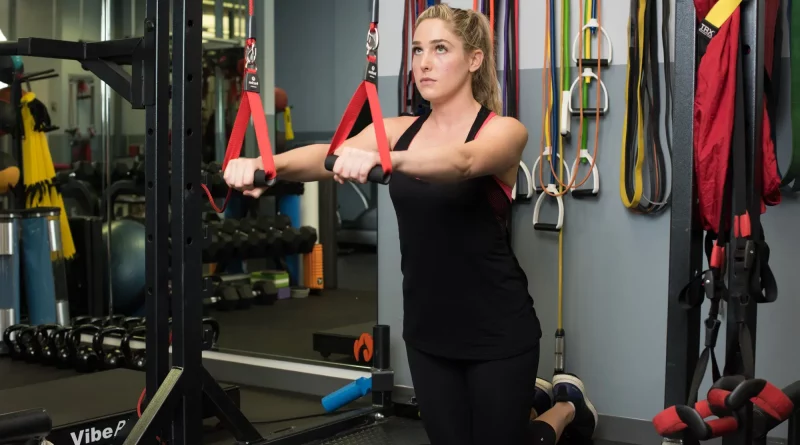Physical Therapy: Different Types and Their Benefits
Physical therapy, or PT as it is frequently referred to, is a critical healthcare occupation that aids people of all ages in recovering from various wounds, operations, and illnesses. Physical therapists are highly skilled professionals who work with patients to enhance their biological function and general well-being through exercise, manual therapy, and education. While the primary goal of physical therapy is to restore and improve a person’s functional ability, there are various types of physical therapy, each tailored to specific needs and conditions.
Common Types of Physical Therapy
To treat a variety of illnesses and accomplish particular therapeutic objectives, physical therapists employ a variety of strategies.
The following are some typical PT methods:
Orthopedic PT
Orthopedic physical therapy is one of the most prevalent and widely recognized types of PT. It focuses on treating musculoskeletal injuries, conditions, and post-operative rehabilitation. This branch of physical therapy helps individuals recover from fractures, joint replacements, ligament injuries, and other orthopedic issues. The primary goal is to reduce pain, restore function, and improve the patient’s overall quality of life. Treatment often includes strengthening exercises, manual therapy, and patient education on injury prevention.
Sports PT
Sports physical therapy caters to athletes and active individuals who have sustained sports-related injuries. These injuries can range from sprains and strains to more severe conditions like torn ligaments or stress fractures. Sports PT aims to facilitate a swift and safe return to sports or physical activities while preventing re-injury. Therapists work closely with athletes to design customized exercise programs that enhance strength, flexibility, and performance, helping athletes reach their peak potential.
Neurological PT
Neurological physical therapy is designed to assist individuals with neurological disorders, such as Parkinson’s disease, multiple sclerosis, or stroke survivors. These conditions often result in impaired mobility, balance, and coordination. Neurological PT helps patients regain control over their movements and improve their independence in daily life. Therapists employ techniques like gait training, neuromuscular re-education, and adaptive equipment to optimize functioning and enhance the patient’s quality of life.
Geriatric PT
Geriatric physical therapy is tailored to meet the unique needs of older adults. As individuals age, they may face challenges related to balance, mobility, and chronic conditions like arthritis. Geriatric PT addresses these issues, aiming to improve the overall quality of life and functional independence of older individuals. Therapists work on exercises that improve strength, flexibility, and endurance while addressing pain management and fall prevention.
Cardiovascular and Pulmonary PT
Cardiovascular and pulmonary physical therapy is specialized for individuals with heart or lung conditions, such as heart attacks, chronic obstructive pulmonary disease (COPD), or pulmonary fibrosis. The focus here is on enhancing cardiovascular endurance and respiratory function. Therapists help patients build tolerance for physical activity, improve breathing techniques, and reduce the risk of future cardiac events.
Occupational PT
Occupational physical therapy, often referred to as OT, is distinct from other forms of PT. It concentrates on helping individuals regain the skills needed for daily living and work-related tasks after an injury or illness. Occupational therapists evaluate the patient’s ability to perform activities like dressing, cooking, and using tools. They then design interventions to enhance these skills and maximize the patient’s independence.
Benefits of Physical Therapy
Pain Relief
One of the primary benefits of physical therapy is pain relief. Physical therapists use various techniques to alleviate pain, including manual therapy, exercises, and modalities like heat or cold treatment. These interventions target the underlying causes of pain, helping patients manage and reduce their discomfort without relying solely on medication.
Improved Mobility
Physical therapy aims to enhance mobility and restore standard movement patterns. Whether improving joint range of motion, increasing flexibility, or reducing muscle stiffness, PT helps individuals regain their ability to move comfortably. This improved mobility translates into a better quality of life and increased independence.
Enhanced Strength and Flexibility
Physical therapy helps individuals build strength and flexibility through targeted exercises and resistance training. This is especially crucial for rehabilitation after surgery or injury. Strengthening weak muscles and improving flexibility not only aids recovery but also prevents future injuries.
Increased Balance and Coordination
Balance and coordination are essential for performing everyday tasks safely. Physical therapy exercises and activities focus on improving these aspects of physical function. Enhanced balance and coordination can significantly reduce the risk of falls and related injuries for older adults or individuals with neurological conditions.
Faster Recovery from Injuries or Surgeries
Physical therapy plays a vital role in post-operative recovery. It helps individuals regain function and mobility faster, reducing the time spent in hospitals and getting patients back to their normal lives sooner. PT also minimizes the risk of post-surgical complications and helps individuals adapt to any physical changes resulting from surgery.
Prevention of Future Difficulties
Another critical advantage of physical therapy is its focus on prevention. By identifying and addressing musculoskeletal issues or imbalances early on, physical therapists can help individuals avoid more severe problems in the future. This proactive approach to health and wellness is essential for maintaining a high quality of life.
Conclusion
Physical therapy encompasses a wide range of specialized disciplines, each offering unique benefits tailored to the needs of patients. Whether recovering from an injury, managing a chronic condition, or seeking to improve your physical function, physical therapy can be a valuable resource. The benefits of physical therapy extend beyond pain relief solution; they encompass improved mobility, enhanced strength and flexibility, increased balance and coordination, faster recovery from injuries or surgeries, and the prevention of future difficulties.




